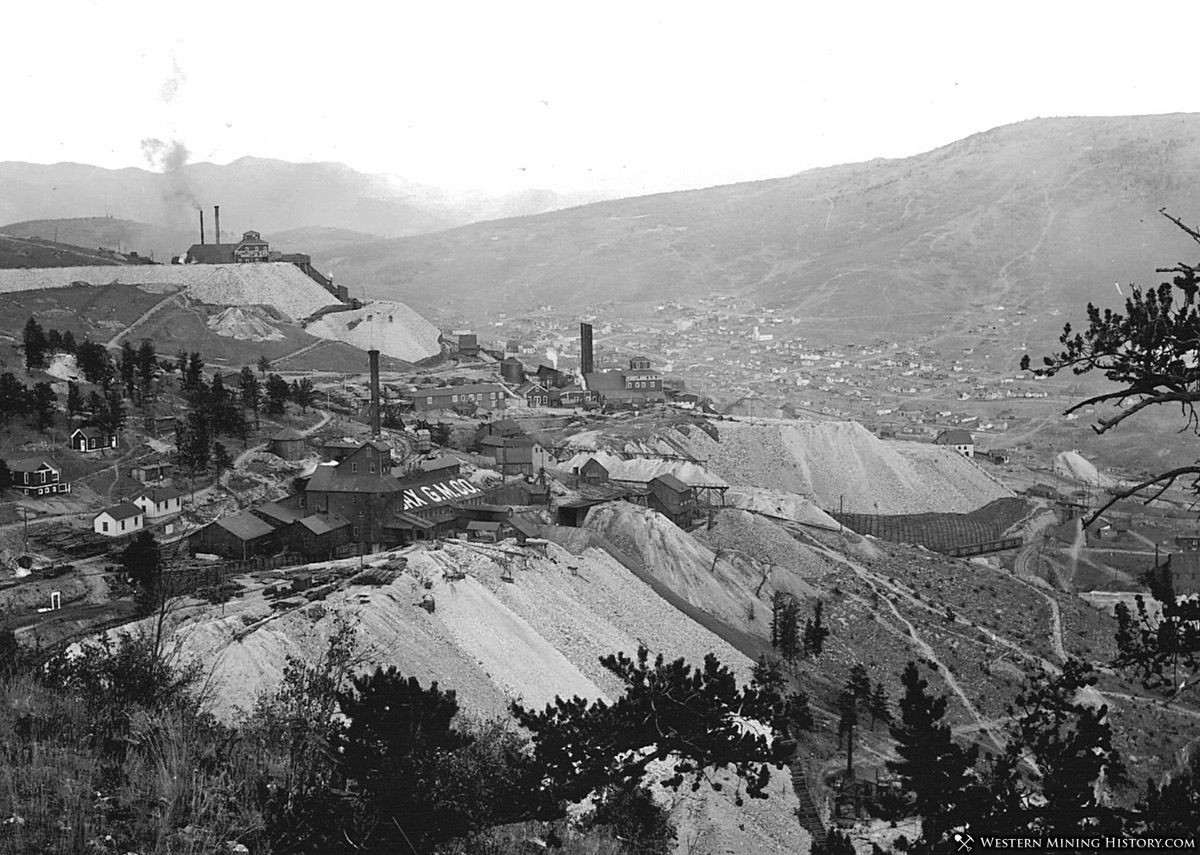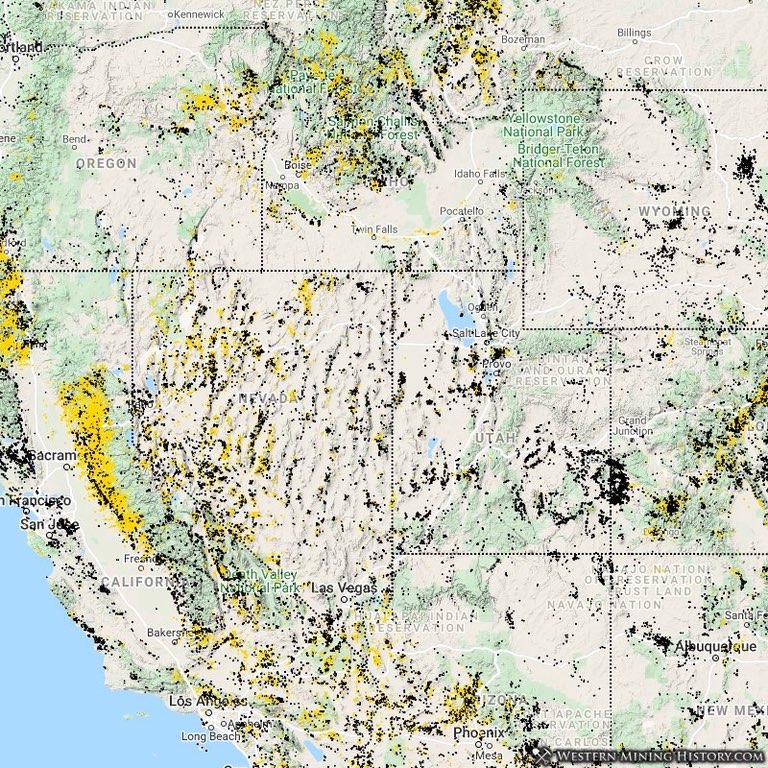About the MRDS Mines Database:
All mine locations were obtained from the USGS Mineral Resources Data System. The locations and other information in this database have not been verified for accuracy. It should be assumed that all mines are on private property.
Mines By State
Over 110,000 mines from the USGS MRDS database have been categorized by state.
Alaska Mines
Of the approximately 12,000 mines recorded in Alaska by the USGS, over 7,000 are listed as gold producers.
Historically Alaska was the fourth largest producer of gold among US states, behind California, Colorado, and South Dakota. It is likely that Alaska has moved up that list due to output from modern mining operations.
Over 1,000 mines are identified as silver producers. Today gold, silver, and base metal mining continue to be active industries in Alaska.
Arizona Mines
Of the approximately 9,000 mines recorded in Arizona by the USGS, over 3,000 are listed as gold producers.
Arizona ranked eighth among US states for historical gold production (statistic compiled 1968).
Arizona is the West's leading producer of copper and much of the states gold production is as a byproduct of copper mining. Copper mining remains an important industry in Arizona today.
California Mines
The USGS has record of over 31,000 mines in California. Over 22,000 mines are identified as gold producers with the vast majority of those mines being gold only operations.
California was the largest historic gold producing state by a wide margin with over 106 million ounces mined compared to second-place Colorado's 40 million ounces (statistic compiled 1968).
Colorado Mines
Of over 11,000 mines recorded in Colorado by the USGS, around 5,000 are listed as gold producers, over 1,000 of which are polymetallic deposits. Colorado was historically a major silver producer.
Colorado was the second largest historical gold producing state behind California (statistic compiled 1968).
Idaho Mines
Of around 6,700 mines recorded in Idaho by the USGS, over 3,000 are listed as gold producers.
Idaho ranked ninth for historical gold production with over 8 million ounces (statistic compiled 1968). The Silver Valley region of northern Idaho is the world's second largest silver producer.
Montana Mines
Of around 7,700 mines recorded in Montana by the USGS, over 3,500 are listed as gold producers.
Montana ranked seventh for historical gold production with around 18 million ounces (statistic compiled 1968). Butte, Montana was one of the world's largest historical copper producers.
Nevada Mines
Of over 12,000 mines recorded in Nevada by the USGS, over 5,500 are listed as gold producers. Over 3,300 mines are listed as silver producers.
Nevada ranked fifth for historical gold production with around 27 million ounces (statistic compiled 1968), however it is likely that number is much higher today as gold mining is still a major industry in the state.
New Mexico Mines
Of approximately 3,800 mines recorded in New Mexico by the USGS, around 1,000 are listed as gold producers.
New Mexico ranked twelfth for historical gold production with over 2 million ounces (statistic compiled 1968).
Oregon Mines
Of approximately 7,700 mines recorded in Oregon by the USGS, around 4,500 are listed as gold producers.
Oregon ranked tenth for historical gold production with almost 6 million ounces (statistic compiled 1968).
South Dakota Mines
Of approximately 1,000 mines recorded in South Dakota by the USGS, around half are listed as gold producers.
South Dakota ranked third for historical gold production with over 30 million ounces (statistic compiled 1968). The Lead district of South Dakota was the single largest historical gold producing district in the United States.
Utah Mines
Of around 6,000 mines recorded in Utah by the USGS, only about 800 were gold producers.
Utah ranked fifth for historical gold production with around 18 million ounces (statistic compiled 1968). Much of Utah's gold production was as a byproduct of copper mining at Bingham, one of the world's largest copper mines.
Washington Mines
Of approximately 6,000 mines recorded in Washington by the USGS, over 2,000 were gold producers.
Washington ranked eleventh for historical gold production with around 3.5 million ounces (statistic compiled 1968).
Wyoming Mines
Of approximately 3,000 mines recorded in Wyoming by the USGS, only around 200 were gold producers.
Wyoming is considered a minor gold producer and was not ranked among gold producing states by the 1968 USGS report.
The Top Ten Gold Producing States

These ten states contributed the most to the gold production that built the West from 1848 through the 1930s. Read more at The Top Ten Gold Producing States.
